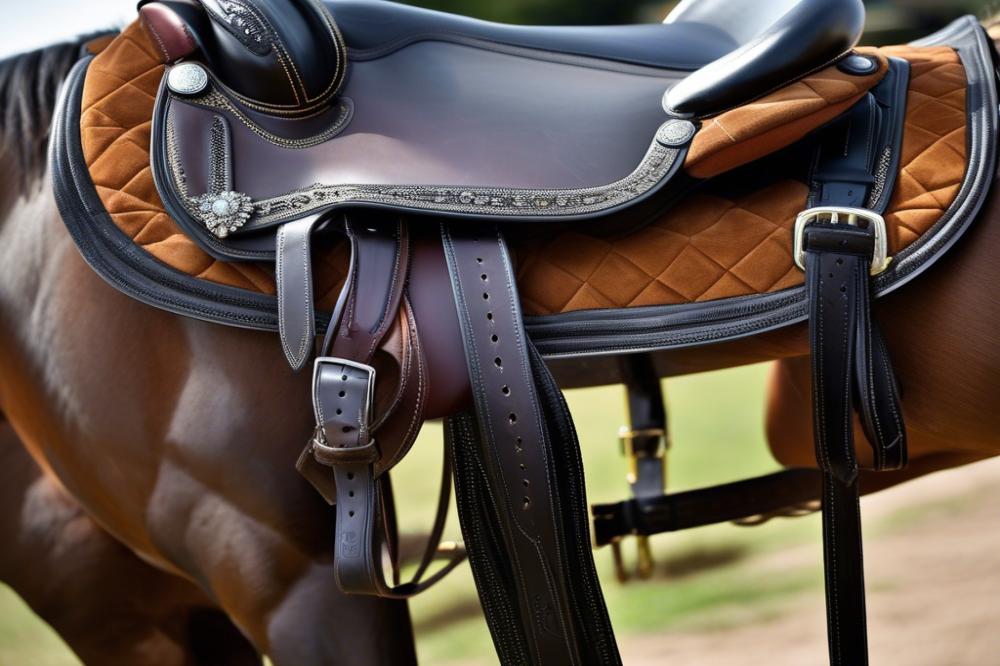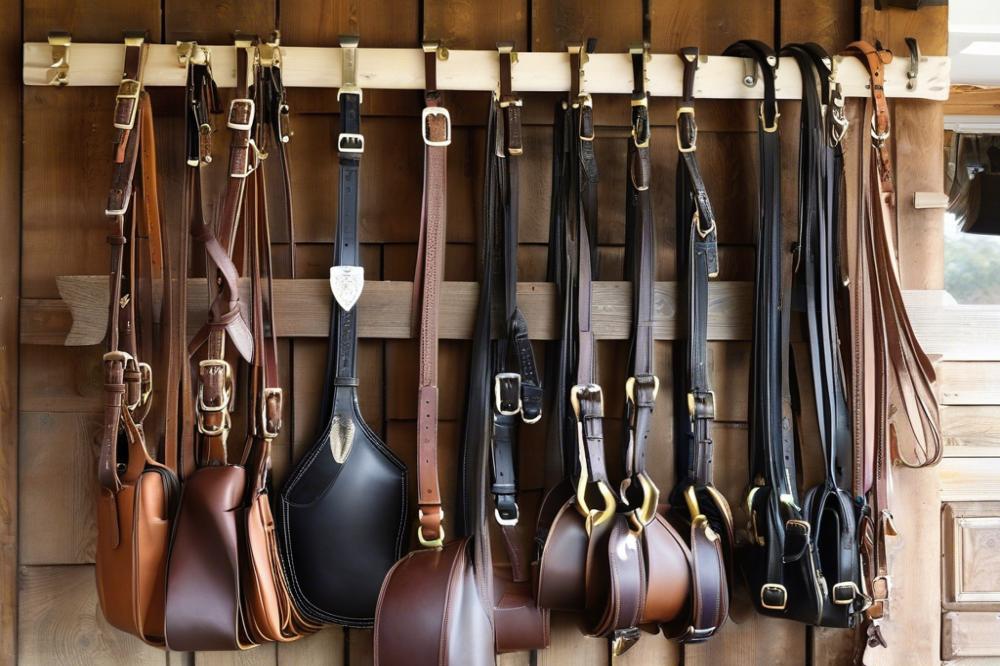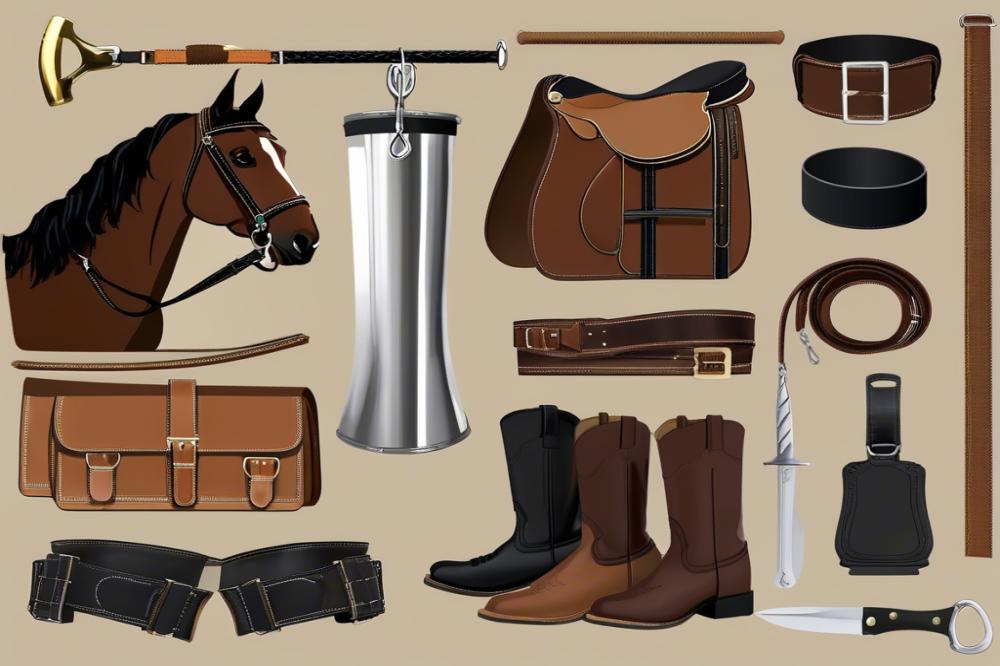What Is Horse Tack
When you step into the world of horse riding, you quickly realize that it’s not just about hopping on a majestic creature and galloping away. Nope! You need the right horse riding gear. This includes all the fancy equipment that helps keep both the rider and the horse safe and comfortable. But what exactly is horse tack? In simple terms, it’s all the equipment and gear you use to ride, train, and take care of a horse. From saddles to bridles, each piece plays a crucial role in the riding experience.
Importance cannot be overstated when it comes to this critical gear. Imagine trying to take a wild stallion out for a ride using nothing but a rope. Even the daring cowboys would think twice about that! Good horse tack not only aids in steering and controlling the horse but also helps in the overall comfort of your equine friend. Properly fitted equipment can prevent issues like chafing or discomfort, which means a smoother ride for you both. It’s no secret that happy horses lead to happy riders.
The world of equine equipment is layered with choices. Think about it: there’s everything from fancy bridles that can make a horse look like royalty to rugged saddles designed for long trails. Each piece serves a purpose in the grand scheme of horse care and training. When committed riders invest in quality, they get peace of mind along with reliable performance. Keeping everything in top shape also requires regular horse tack maintenance, so it stays safe and functional.
Horse training becomes a much simpler affair with the right gear. An experienced rider knows that using the appropriate tack can influence how a horse responds, making it easier to teach new skills. Picture this: you’re trying to teach a cast horse to trot, and you realize you’re using a saddle that doesn’t fit right. Not the most effective approach, right? You’d probably get frustrated, and so would the horse!
Finally, it’s fascinating to reflect on how certain things can evolve over time. If you were to dive into a debate on camel vs horse speed, you wouldn’t think tack plays into that. Yet, in the end, the comfort and safety still matter, regardless of the speed at which you’re moving. Riding gear isn’t merely a bunch of equipment; it’s an essential part of the adventure, making riding more enjoyable. After all, who wouldn’t want to have a good time riding in style?
Types of Horse Tack

Bridles and Bits
Bridles are essential pieces of equestrian equipment. They hold the bit, which sits in the horse’s mouth and helps the rider communicate. Choosing the right bridle can feel like shopping for a new pair of shoes. Not every style fits every horse! Some riders prefer a snaffle bit for gentle control, while others might go for a curb bit for more advanced handling. Each option serves a different purpose. If you’re into horse care, regular checks and cleaning of these pieces are vital. Keeps them in good shape and ensures they work effectively.
Saddles
The saddle is where comfort meets functionality. It’s the most recognizable piece of horse riding gear. A good saddle ensures both horse and rider can work together harmoniously. There are many styles out there, including Western, English, and dressage saddles. Picking the right one is like finding the perfect seat in a movie theater. You want to feel good and properly supported! Plus, proper fit means avoiding chafing and discomfort for your horse. Remember, maintenance is key—oiling the leather and checking for any wear can go a long way.
Girths and Cinches
Connecting the saddle to the horse is the task of girths and cinches. Think of them as the trusty seatbelt for riding! They should fit snugly but not restrict movement. If they’ve seen better days, consider replacing them to keep your ride safe. A girth that’s too tight can cause discomfort and even lead to behavior issues during horse training. Nobody wants to ride a grumpy horse! Made from various materials, swim through options until you find one that works best for your horse’s shape and size.
Stirrups and Leathers
Stirrups are often the unsung heroes of horse riding gear. Without them, getting on and off a horse would be quite an acrobatic feat! Leathers connect stirrups to the saddle, allowing you to adjust your height easily. If you’re a beginner, you may need a bit of practice to find that perfect balance. Some riders prefer wider stirrups for comfort, especially on long rides. Keeping them clean will not only help them look polished but also extend their life. A little upkeep goes a long way!
Reins
Reins play a crucial role in horse communication. They connect the rider to the horse, allowing for guidance and control. Picking the right reins can transform your riding experience. Some people go for leather, while others may choose cotton or synthetic materials. Each type offers different benefits. Keeping reins in working condition is necessary; nobody likes tangled or frayed edges! Regular horse tack maintenance will save you headaches down the line. After all, a good ride starts with clear signals!
Materials Used in Horse Tack

Leather
Leather is a classic choice for equestrian equipment. It brings durability and a timeless look that many horse owners appreciate. This natural material can handle the wear and tear of horse riding gear, especially when properly cared for. When you think of leather, picture saddles, bridles, and halters. They often age beautifully, developing a rich patina over time. However, maintaining leather is key. Regular cleaning and conditioning help prevent cracks and preserve its strength. Choosing leather means investing in quality, but it’s also important to look for ethically sourced options.
Synthetic Materials
Synthetic materials have revolutionized horse tack. These fabrics, like polyester or thermoplastic, offer lightweight options that are easier to manage. They resist water and are often less expensive than leather. Many riders love these because they come in vibrant colors and styles. Plus, synthetic gear can be a breeze to clean, making horse care simpler. With just soap and water, you can zap dirt away. Of course, some purists may argue against them, but there’s no denying the practicality they bring to horse training.
Nylon and Its Uses
Nylon is a superstar in the world of horse tack. This tough material is often used for leads, halters, and even some saddles. Its strength and resistance to abrasion make it a go-to choice for many riders. You might see it in the form of colorful straps or sturdy blankets. Nylon is also great in wet conditions; it dries fast and won’t rot like some other materials. Just be careful; it can sometimes stretch if not used properly. A good tip is to check the stitching regularly during your horse riding activities for added safety.
Other Materials
Other materials find their way into equine equipment too. Rubber is frequently used in bits and reins, providing an element of comfort for the horse. It offers a softer touch and can be more forgiving than metal. Additionally, wool is often sourced for saddle pads, lending extra cushioning. Cotton and even fleece are popular choices for blankets, keeping horses snug and comfortable. There are also eco-friendly options emerging, made from recycled materials. This change not only green but also shows how our understanding of horse care evolves. With so many choices available today, riders can mix and match to best suit their needs.
Choosing the Right Horse Tack

Selecting the right equestrian equipment isn’t just about style. It’s essential to consider horse size and breed. A sturdy draft horse requires different gear compared to a petite pony. Tack that fits poorly can cause discomfort or even injury. If you have an Arabian, you’ll want something light and snug. For a Clydesdale, think substantial and secure. Always measure your horse to get the right fit before diving into the world of horse riding gear.
Rider comfort plays a vital role, too. If you’re planning on long rides, you’ll want equipment that is comfortable for you, not just the horse. There’s nothing worse than a saddle that pinches or chafes. It’s like sitting on a rock for hours! Consider what you’ll use the gear for. Casual trail rides call for different gear than competitive equine events. Think about your preferences and how you ride. Does your style lead you to prefer something sleek or more traditional? Each choice can impact your overall experience.
Fit and Adjustment
Tack must fit properly, or it can lead to problems for both horse and rider. Take time to check that all pieces adjust well. A small adjustment can make a world of difference! Remember, it’s not just about making a fashion statement. You want gear that supports your horse well during training sessions. Regular inspection for wear and tear is crucial. Good horse care involves maintaining your equipment, too. Sturdy leather or fabric can last years but needs attention. You wouldn’t drive a car with a flat tire, would you?
Many riders develop a strong bond with their gear. It becomes a part of their riding journey! Finding the right combination takes time. Keep experimenting until you discover what truly works. Horse tack maintenance is equally as important as selecting the correct items. This is where quality of materials matters. Durability and comfort should top your checklist. Think about how your gear complements your riding goals. After all, riding should be enjoyable.
Above all, trust your instincts while choosing. If something doesn’t feel right, it probably isn’t! A rider’s happiness can directly influence how well they connect with their horse. So, stay smart, select wisely, and enjoy the ride!
Maintenance and Care for Horse Tack
Cleaning Techniques
When it comes to caring for your equestrian equipment, cleaning is essential. Dirt and sweat can build up quickly, causing problems if left unattended. Start with a good wipe-down after every ride. A damp cloth can work wonders. For stubborn stains, use a soft brush. Always remember to check for any hidden mud in crevices.
Using saddle soap is key for leather gear. Apply a small amount with a sponge, then rinse with a clean damp cloth. Once it’s dry, add some leather conditioner. This will keep the leather supple and extend its life. Don’t forget to clean metal parts, too! A little oil can prevent rust and keep them working smoothly.
Storage Recommendations
Proper storage is just as important as cleaning. Gear can be easily damaged if left scattered about. Use a dry, cool space to hang up saddles and bridles. Hanging them keeps the shape intact. If you keep everything in a tack box, make sure it’s well-ventilated.
Avoid stacking items on top of one another. This can lead to scratches or dents. Organizing your horse riding gear is like having a tidy room. It makes everything easier to find when you need it. Remember, sunlight can damage leather, so storing in a shaded area is wise.
Repairs and Replacement
Every piece of horse training equipment has its time. Knowing when to repair or replace gear can save you trouble down the road. If a strap shows signs of wear, don’t ignore it. A quick stitch or replacement can prevent accidents later on.
For those who aren’t handy, asking for help is a good idea. Local tack shops often provide repair services. If a bit breaks, it’s usually not the end of the world. Most items can be replaced easily. Keeping an eye on your equine equipment helps ensure safe rides for both you and your horse.
Feeling overwhelmed? Don’t sweat it! With a little effort and vigilance, maintaining your equipment will feel less like a chore and more like a part of horse care that you actually enjoy. Tack care is one more way to show your horse some love.
Safety Considerations in Using Horse Tack
Proper Fitting to Prevent Injury
Getting the right fit for your equestrian equipment is crucial. Imagine riding your horse in gear that’s too loose or too tight. It might feel like trying to wear shoes that are two sizes too small—uncomfortable and painful! A snug fit prevents chafing or rubbing, which can hurt your horse. Each piece of horse riding gear, from saddles to bridles, should sit properly. Otherwise, you could find yourself in a sticky situation during a ride. Always check the fit before you head out.
Signs of Wear and Tear
Over time, even the best quality equine equipment can show signs of decay. Look for fraying straps, cracks in leather, or rust on metal parts. These issues can develop gradually, sometimes quite sneakily. If you notice a funky smell or a change in color, it could be time for a replacement. Don’t wait until it breaks in the middle of a ride! Keeping an eye on these details can save you from mishaps. Remember, a little attention goes a long way in maintaining your gear.
Importance of Regular Inspections
Have you ever checked your horse’s tack before a ride? It’s like spying for trouble before diving into a deep swimming pool. Routine inspections are key to safety and performance. Even a minor flaw can become a major headache if left unchecked. Look for everything from loose stitching to stiff buckles. Scheduling inspections can be part of your horse care routine. If you find anything unusual, fixing it sooner rather than later will keep both you and your horse happy. Nothing beats peace of mind on a clear day riding through the fields!
Popular Brands and Manufacturers of Horse Tack
Overview of Leading Brands
Many brands stand out when it comes to equestrian equipment. Well-known names like Dover Saddlery and Stateline Tack offer a wide range of products. They’re popular for good reasons. These companies focus on quality and comfort. Riders want gear that lasts, and these brands deliver. If you look at various horse riding gear, more than likely, you will spot their items. It’s like seeing a familiar face in a crowd!
Innovations in Horse Tack Design
Horse care has changed quite a bit over the years. New technologies and materials have transformed traditional designs. For instance, breathable fabrics now keep horses comfortable during workouts. You might also notice synthetic saddles gaining popularity. They’re lightweight and easier to maintain than leather. Innovations like these can significantly impact performance and safety. Riders appreciate tools that enhance their experience. Who doesn’t want to feel confident when competing in a show?
Preference Within the Equestrian Community
Among riders, brand enthusiasm can vary widely. Some folks swear by certain manufacturers based on personal experiences. Others might choose equipment based on recommendations from friends. The equine equipment landscape often resembles a friendly competition itself. Everyone wants the best for their horses. Enthusiast groups often share tips on horse tack maintenance. It’s like passing around family recipes but for gear! If you ask around, you’re bound to hear differing opinions. At the end of the day, it’s all about finding what works best for each rider and their trusty steeds.
Wrapping It All Up
Horse tack plays a crucial role in the world of equestrian activities. Whether you’re saddling up for a casual ride around the block or gearing up for a competition with endurance horse breeds, having the right equipment can make all the difference in the comfort and performance of both horse and rider. Anyone who has spent time with these majestic creatures knows that a well-fitted saddle or bridle can feel like a cozy pair of shoes after a long day.
Choosing the right gear may seem overwhelming at first, but it’s vital to take your time. The plethora of options might remind you of those infamous horse kinds lists that seem endless! Reading reviews, asking questions, and even trying different styles can help you make a well-informed decision. Remember, what works for one horse might not work for another, so pay attention to how your animal responds.
Maintaining your gear shouldn’t feel like a chore. Regular cleaning and inspection can extend the life of your tack and keep your horse comfortable. Imagine finding that elusive spare tire for your bike; good luck if you haven’t checked the shed in years! Tack is just like that; take care of it, and it will take care of you in return.
In conclusion, thoughtful selection and proper care of your riding gear serve as foundation stones in the overall equestrian experience. Tack serves not just a functional purpose but also strengthens the bond between horse and rider. So, embrace the adventure—ride safely, and enjoy every moment spent in the saddle!



